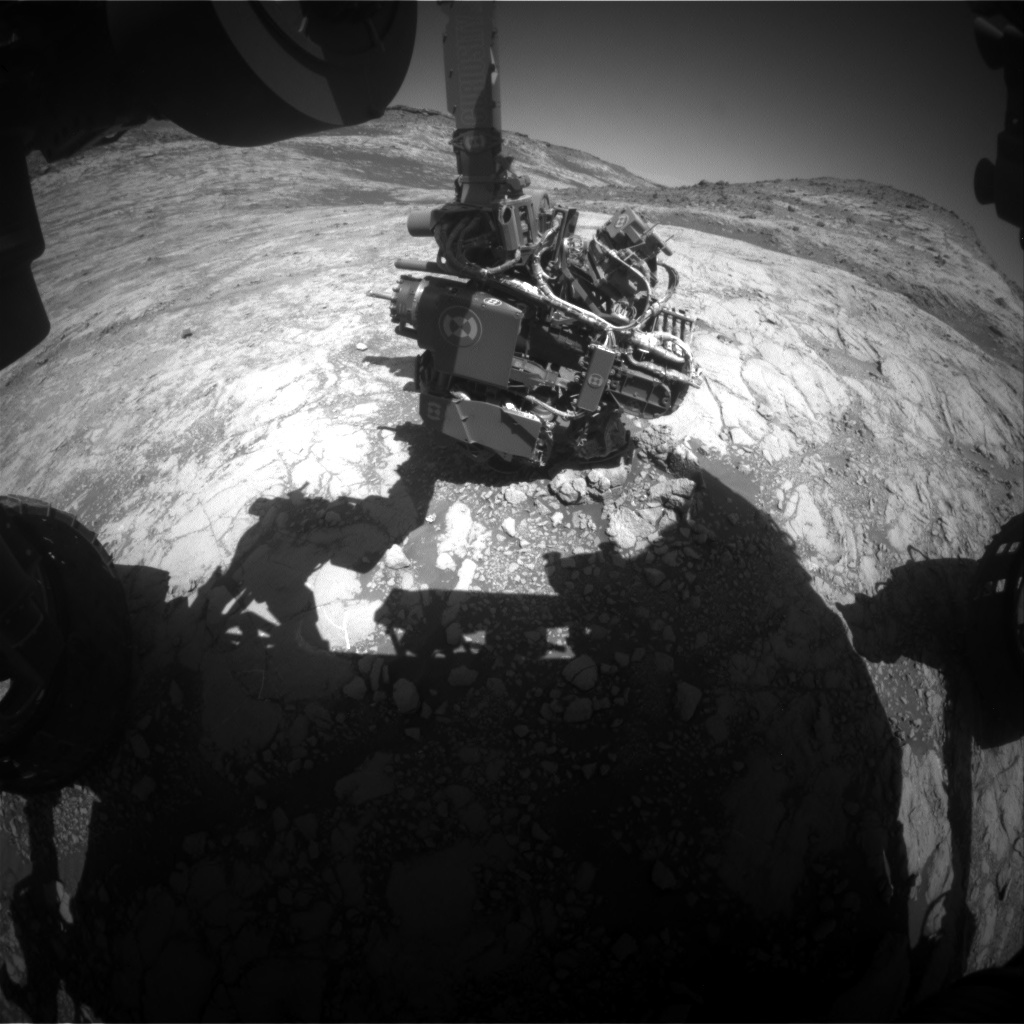
An attitude problem sidelined NASA's Mars rover Curiosity recently, but the robot's handlers whipped it back into shape in short order.
"Partway through its last set of activities, Curiosity lost its orientation. Some knowledge of its attitude was not quite right, so it couldn't make the essential safety evaluation," Curiosity team member Dawn Sumner, a planetary geologist at the University of California, Davis, wrote in a mission update on Monday (Jan. 20).
"Attitude" in this case refers to Curiosity's position in space, and the position of its various parts, such as its instrument-laden robotic arm. Losing attitude knowledge could result in some pretty bad outcomes — for example, bonking that robotic arm into something or mistakenly pointing a camera at the sun, Sumner explained.
Related: Amazing Mars Photos by NASA's Curiosity Rover (Latest Images)
"Thus, Curiosity stopped moving, freezing in place until its knowledge of its orientation can be recovered," she added. "Curiosity kept sending us information, so we know what happened and can develop a recovery plan."
That plan was designed to feed Curiosity the requisite attitude info. And the team didn't have to wait long to hear how things went.
"We learned this morning that plan was successful and Curiosity was ready for science once more!" mission team member Scott Guzewich, an atmospheric scientist at NASA's Goddard Space Flight Center in Greenbelt, Maryland, wrote in another update on Tuesday (Jan. 21).
Get the Space.com Newsletter
Breaking space news, the latest updates on rocket launches, skywatching events and more!
This latest recovery shouldn't come as a shock; Curiosity has overcome numerous setbacks since landing inside Mars' 96-mile-wide (154 kilometers) Gale Crater in August 2012. The rover has had issues with its memory and its wheels, for example, but has always bounced back.
Curiosity's resilience is a testament to the rover's robust design and its highly capable team, both of which have allowed the six-wheeled robot to keep rolling far beyond its two-Earth-year primary mission.
The main goal of that mission involves assessing Gale's past ability to support life. Curiosity has found that the area hosted a potentially habitable lake-and-stream system in the ancient past. And this system was long-lived, likely lasting for millions of years at a time.
Curiosity is now climbing the foothills of Mount Sharp, the 3.4-mile-high (5.5 km) mountain that rises from Gale's center. The rover is reading the rocks for clues about Mars' long-ago climate transition, which turned the Red Planet from a relatively warm and wet place to the cold desert world it is today.
- The Search for Life on Mars: A Photo Timeline
- Photos: Ancient Mars Lake Could Have Supported Life
- Ancient Mars Lakes & Laser Blasts: Curiosity Rover's 10 Biggest Moments in 1st 5 Years
Mike Wall's book about the search for alien life, "Out There" (Grand Central Publishing, 2018; illustrated by Karl Tate), is out now. Follow him on Twitter @michaeldwall. Follow us on Twitter @Spacedotcom or Facebook.

Join our Space Forums to keep talking space on the latest missions, night sky and more! And if you have a news tip, correction or comment, let us know at: community@space.com.

Michael Wall is a Senior Space Writer with Space.com and joined the team in 2010. He primarily covers exoplanets, spaceflight and military space, but has been known to dabble in the space art beat. His book about the search for alien life, "Out There," was published on Nov. 13, 2018. Before becoming a science writer, Michael worked as a herpetologist and wildlife biologist. He has a Ph.D. in evolutionary biology from the University of Sydney, Australia, a bachelor's degree from the University of Arizona, and a graduate certificate in science writing from the University of California, Santa Cruz. To find out what his latest project is, you can follow Michael on Twitter.
-
rod ReplyAdmin said:An attitude problem sidelined NASA's Mars rover Curiosity recently, but the robot's handlers whipped it back into shape in short order.
NASA's Mars rover Curiosity had an attitude problem. (But it's fine now.) : Read more
"The main goal of that mission involves assessing Gale's past ability to support life. Curiosity has found that the area hosted a potentially habitable lake-and-stream system in the ancient past. And this system was long-lived, likely lasting for millions of years at a time."
A good report. I note, Martian meteorite samples exist on Earth and studied for 25 years or more. NASA scientists find evidence of water in meteorite, reviving debate over life on Mars, "Summary: A team of scientists has found evidence of past water movement throughout a Martian meteorite, reviving debate in the scientific community over life on Mars. In 1996, a group of scientists reported biogenic evidence in the Allan Hills 84001(ALH84001) meteorite. In this new study, researchers focused on structures deep within a 30-pound (13.7-kilogram) Martian meteorite known as Yamato 000593 (Y000593)."
So far, the study of Martian rock samples available - no conclusive claim that life is/was on Mars. -
chronicartart So it collects stuff from the surface. It test it for past life. How many test can / will Curiosity preform?Reply









